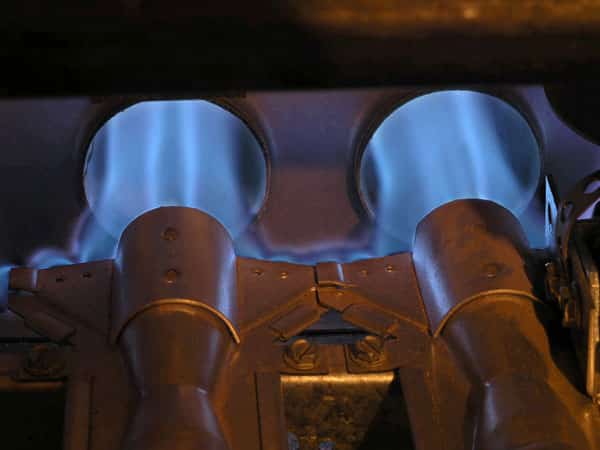While thermal mass flow meters are not AGA-approved to measure natural gas in custody transfer, they satisfy measuring the natural gas flow rate in applications of combustion control, greenhouse gas reporting, submetering, and real-time gas measurement in pipelines.

Natural Gas Fuel
Natural gas is a naturally occurring hydrocarbon formed from the decomposition of organic plants and animals under high pressure and found with oil, coal, or shale. The composition of natural gas varies but is high in methane (75-90%). Natural gas will contain other hydrocarbons, including ethane, propane, butane, plus non-hydrocarbon gases with carbon dioxide, nitrogen, water vapor, and occasionally hydrogen sulfide.
The primary use of gas is fuel, and the product is also a raw material for the chemical and fertilizer industries. Natural gas is also compressed (CNG) and used as a replacement for gasoline.
As a fuel, we burn gas in combustion processes for heating and cooking. Natural gas is the fuel for many combustion sources, including boilers, furnaces, process heaters, kilns, and burners for industrial use. Natural gas is also frequently used in central power stations for the production of electrical power. A benefit here is that the combustion of natural gas emits approximately 35 to 45 percent less carbon dioxide than combustion of oil or coal.
Natural Gas Measurement
The American Gas Association (AGA) is an organization representing many gas supply companies. AGA has developed a series of standards used for custody transfer of natural gas between users. It is essential for both the buyer and seller to have high accuracy measurement for custody transfer transactions.
The AGA has developed some acceptable technologies for the custody transfer of natural gas. A custody transfer metering system for natural gas typically includes multiple flow meters with meter runs and flow conditioning, a flow computer, a gas chromatograph to determine the gas composition, along with supporting instrumentation and controls for metering system operation. These measurement systems are large and expensive.
NG Thermal Mass Flow Meter Applications
The AGA does not approve thermal mass flow meters for custody transfer. However, there are many industrial and utility applications where thermal mass flow meters are very appropriate:
-
- Combustion Control – Thermal mass flow meters assist in accurately measuring the natural gas fuel to a combustion source to control the fuel-to-air ratio to obtain optimum combustion. For more information, see Combustion Efficiency.
- Greenhouse Gas Reporting – To meet EPA requirements, users must report greenhouse gas emissions from various combustion operations and other sources. One easy way to report GHG emissions from a combustion source is to measure and totalize natural gas consumption. Using the EPA formulas, convert the gas consumption into GHG emissions. More information can be on Greenhouse Gas Emissions Monitoring.
- Submetering – A facility with multiple combustion sources may wish to monitor the flow rate to each source through submetering. Submetering helps evaluate the efficiency of the different combustion operations or may be used for internal billing to various departments.
- Time of Day Usage – Many flow meters provide the total flow over a given period. Gas utility companies use thermal mass flow meters in their pipelines to obtain a real-time natural gas flow rate at different locations. This information helps evaluate the capabilities of the existing pipeline system and provides information for determining future growth and modifications. For more information, visit Natural Gas Distribution (Non-Custody Transfer Applications).
For these applications, thermal mass flow meters provide:
-
- Accurate flow measurement
- Easy installation
- Direct mass flow measurement and not sensitive to changes in gas pressure or temperature
- High rangeability and turndown capabilities
- Ability to measure flow rates lower than other flow instrumentation
- Calibrated for natural gas
While the most common use of natural gas is as a fuel, here are other industrial demands for natural gas:
-
- During hydrogen production, natural gas and high-pressure steam in the presence of a catalyst creates the majority of hydrogen
- Feedstock for the manufacture of chemicals and plastics
- Production of ammonia which is used to make fertilizer

